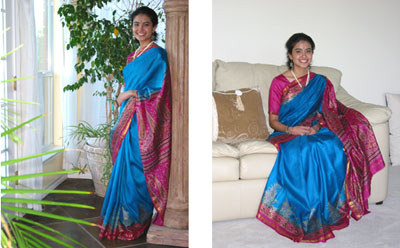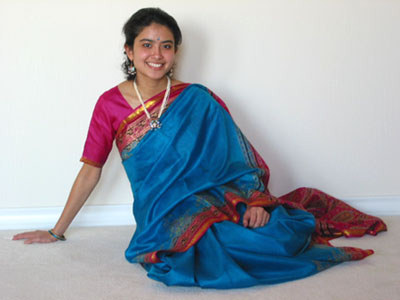SAREE
In this multi-ethnic, multi-cultural land abound many styles of dress for women; however, saree (or sari, pronounced “saaree”) is a common denominator. From Himalaya to Kerala and Punjab to Assam, for official functions Indian women prefer to wear sari. This practice crosses religious and other barriers to a large extent. And when worn properly and clad on a graceful woman, saree can compete with any other national dress admirably.

>The long (usually 9yards long) item of clothing which is called saree is wound around the midriff of the woman, over a skirt at least once and then a portion is folded into pleats. The upper end of this pleated section is then tucked inside the skirt for anchoring. The remainder of the saree is then draped across the chest and finally a segment is hung over either the left or right shoulder so that the end hangs down over the back to around the level of the buttocks. Some women find it useful to secure the segment that goes over the shoulder by pinning to the blouse.

While the texture of the cloth as well as the patterns and colors add to the beauty of saree, the blouse is what usually changes with each trend in fashion. Usually the blouse fits tightly around the chest and shoulders with the front extending to the neck or cut slightly above the breasts. As fashion changes, this cut may move up or down, the sleeves go up or down or disappear entirely (ie: sleeveless) and the lower part of the blouse go up and expose the navel. Of course, the conservative wearer is unlikely to expose too much of her body and may even use the lower end of the saree (the part that hangs down from the back of a shoulder) to wrap around the head and expose only the face.
The model shown wearing saree in the above pictures is Chantel Raghu